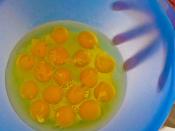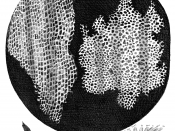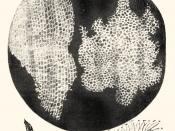THE LANGUAGE OF THE CELL
MAY 3rd, 1996 SCIENCE 10 AP
BOOK INFORMATION
LIBRARY: Fish Creek Area Library
NAME OF BOOK: The Language of the Cell
AUTHOR: Claude Kordon
PUBLISHER: McGraw-Hill, Inc.
PUBLICATION DATE: 1993
CALL NUMBER: 3 9065 03969 1246
DUE DATE: May 3rd, 1996
The cell is a complex and delicate system: It can be seen that the cell is the stage where everyday functions such as molecule movement, protein synthesis and tissue repair take place. All organelles within the cell are well rehearsed in their operations, but an error on an organelles behalf, can send the cell and it's organelles into panic. The efficiency rate of the cell plummets down to a low level. It does take some time for the dust to settle, and once the scripts are memorized, the cell is now ready to begin it's tasks again.
Since the 19th Century, it was known that all living things, whether they were plants or animals, were made up of cells.
This whole idea has been given credit to an English Physicist, Robert Hook (1635-1703), when he looked at a thin slice of cork under powerful hand lens. Hook discovered a large number of cells. Rudolf Virchow (1821-1902) propounded this idea, that the cell is a basic structure and functional unit for all living organisms.
A cell can be a wide range of shapes and sizes, although most cells are microscopic. Inside a cell membrane, a nucleus can be seen. The nucleus is the control center of the cell. Between the nucleus and the membrane, there is a polysaccharide matrix called the cytoplasm, where organelles can be found. The organelles are attached to a framework. The cell's cytoskeleton.
Every living cell has the ability to detect signals from it's environment. The signals are usually in the...



Suggestions
Good essay but lots of informal language used. Topic sentences for the paragraphs aren't as strong as they could be.
0 out of 0 people found this comment useful.